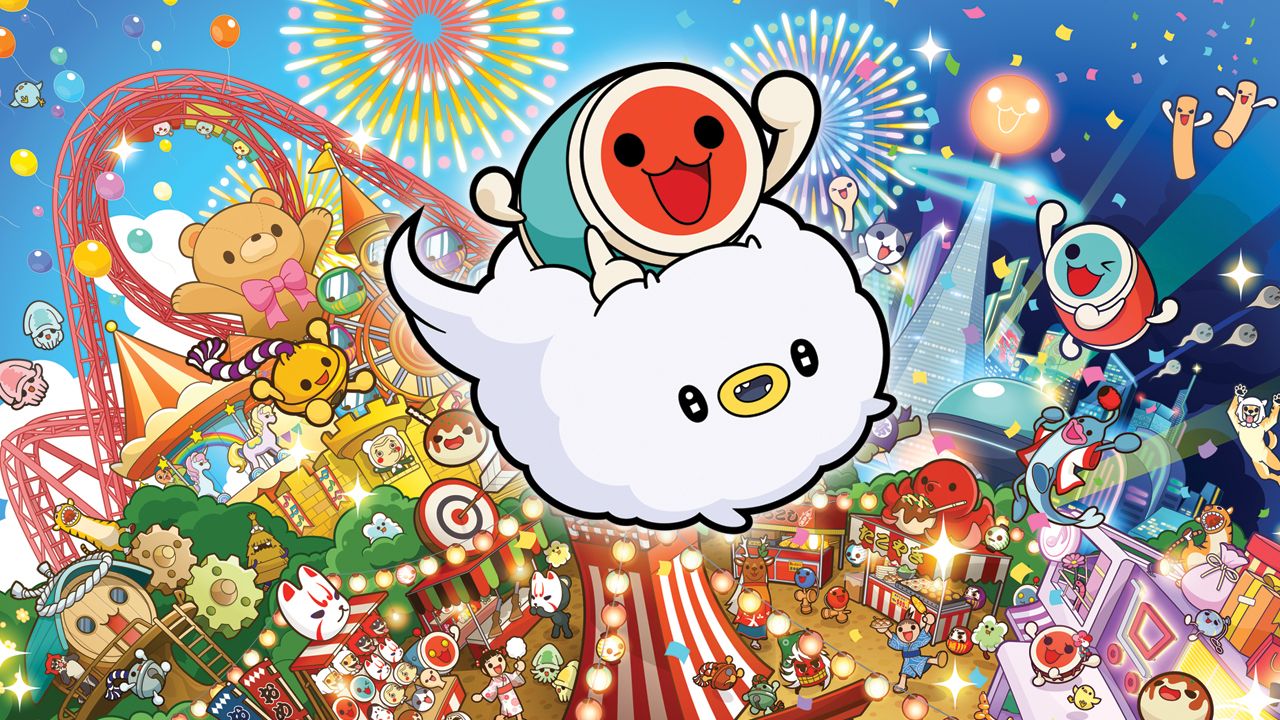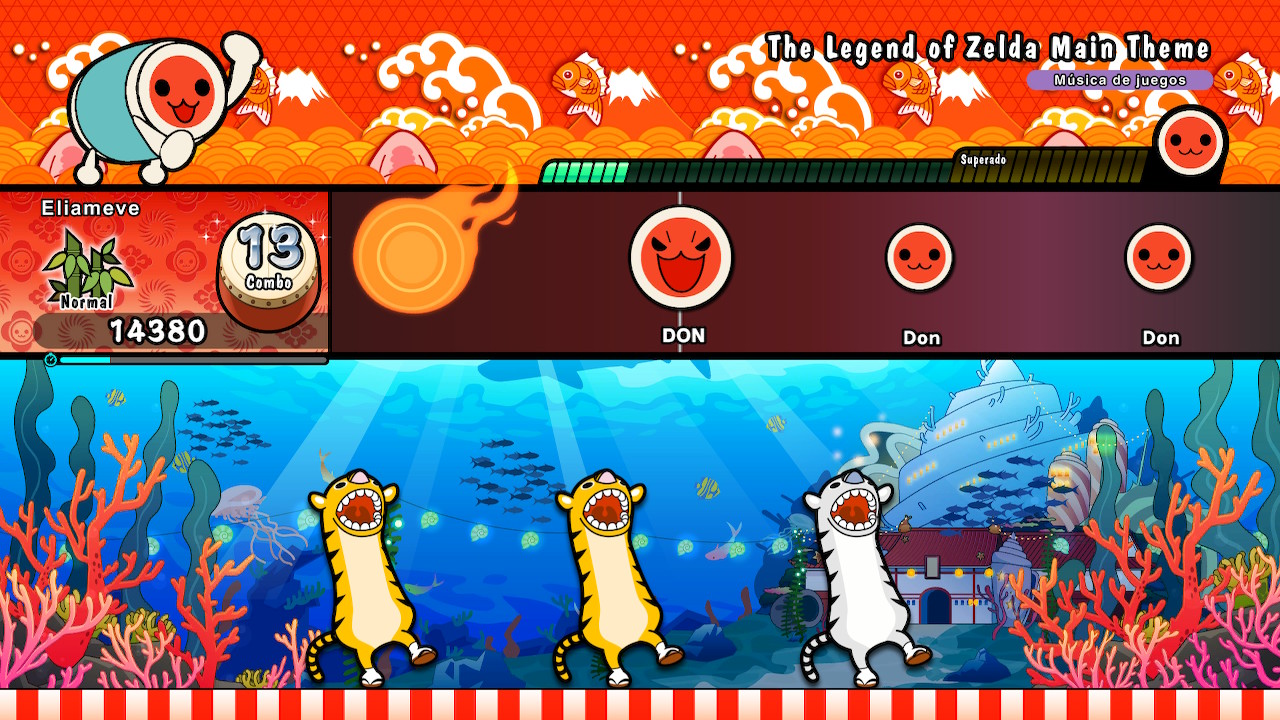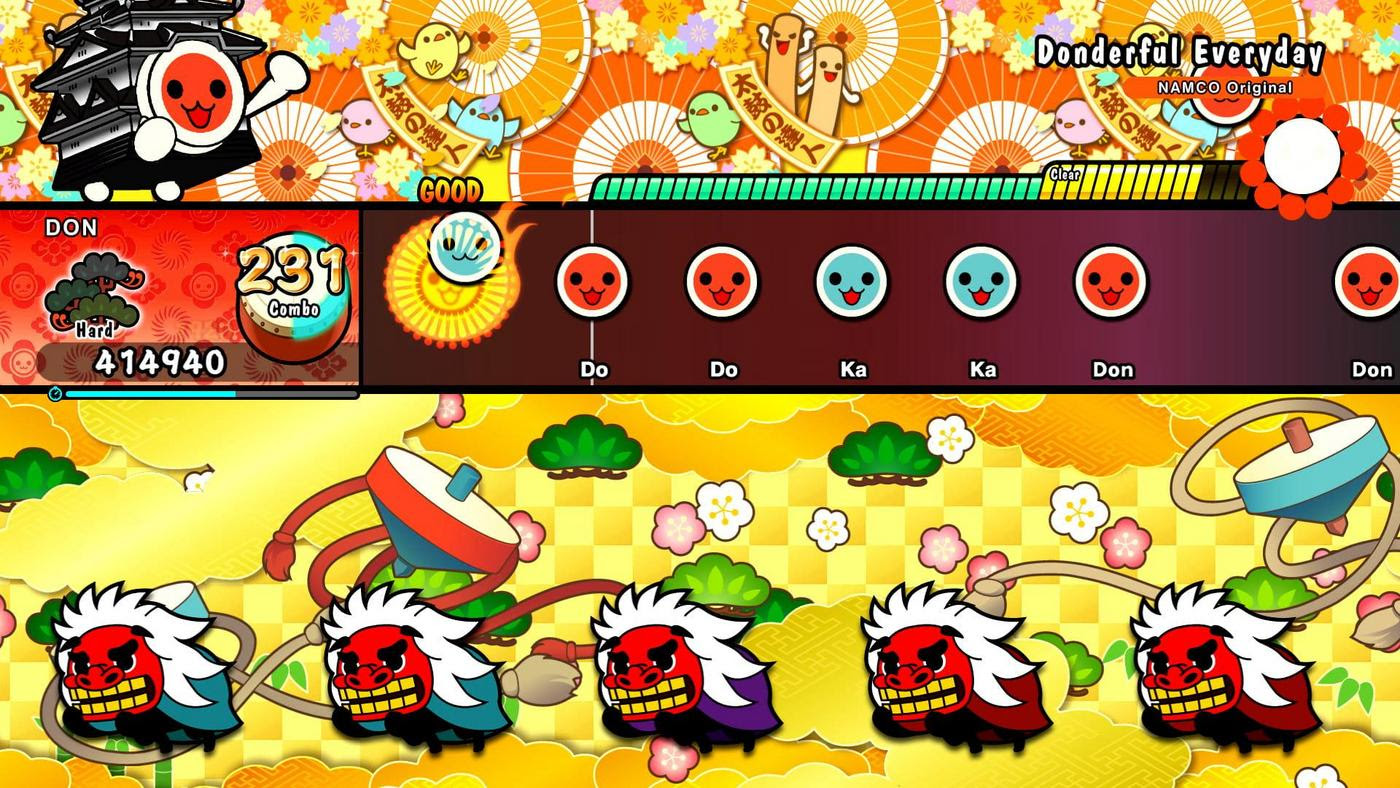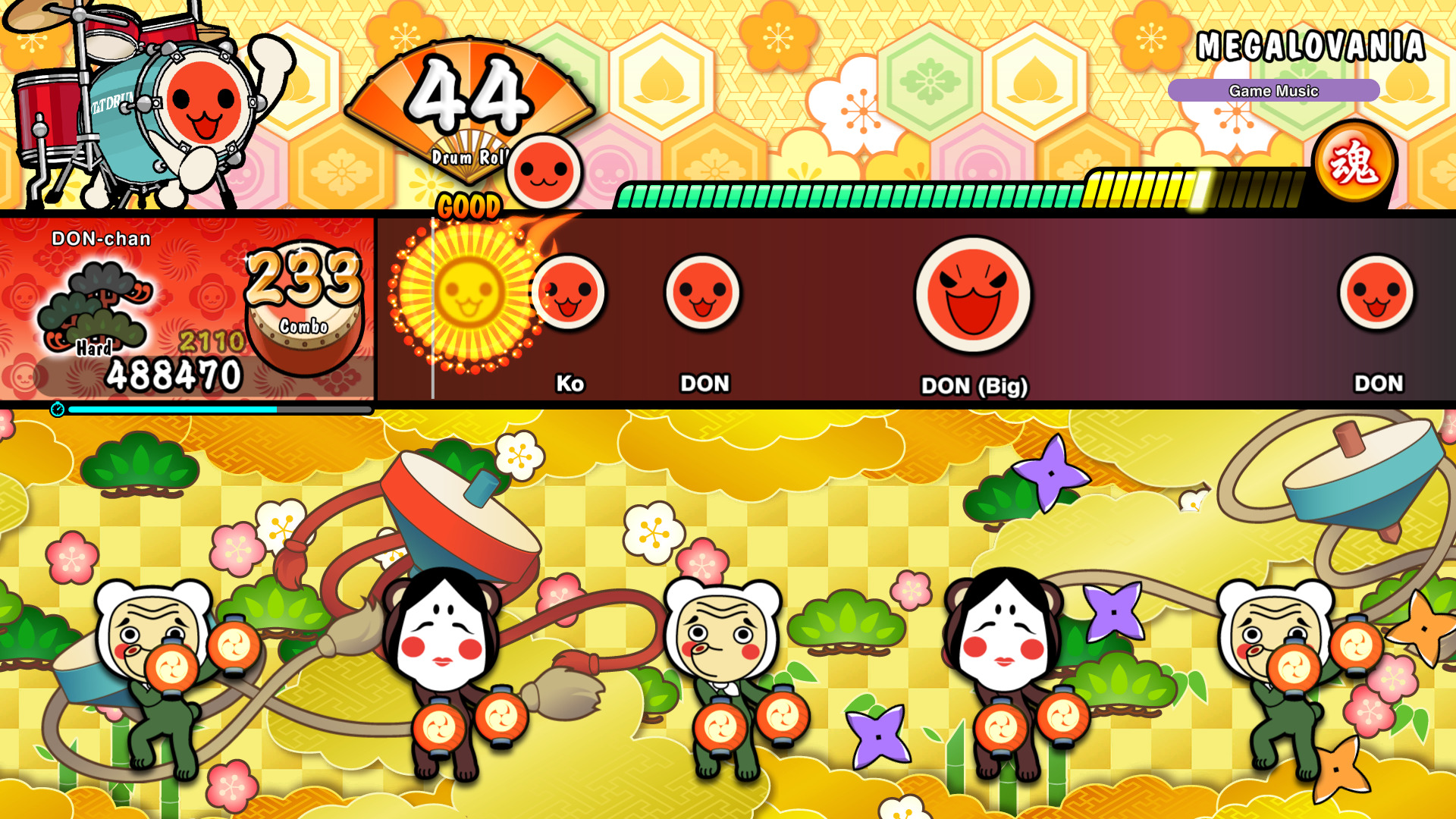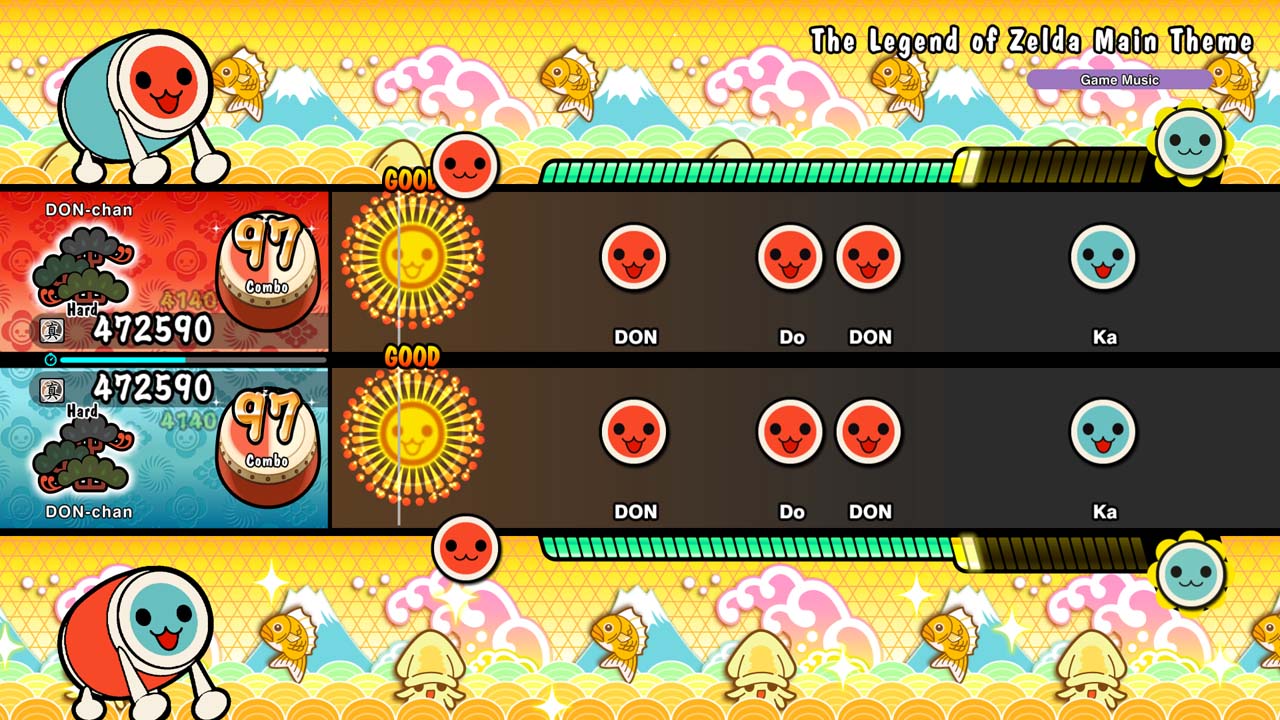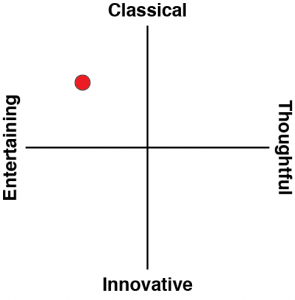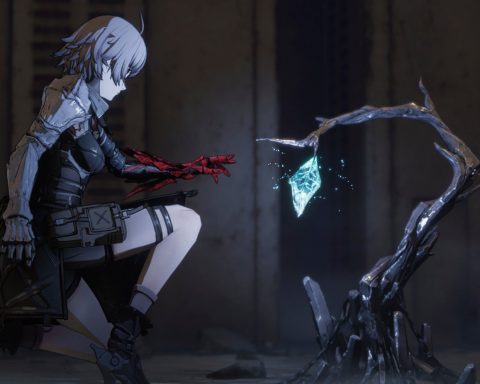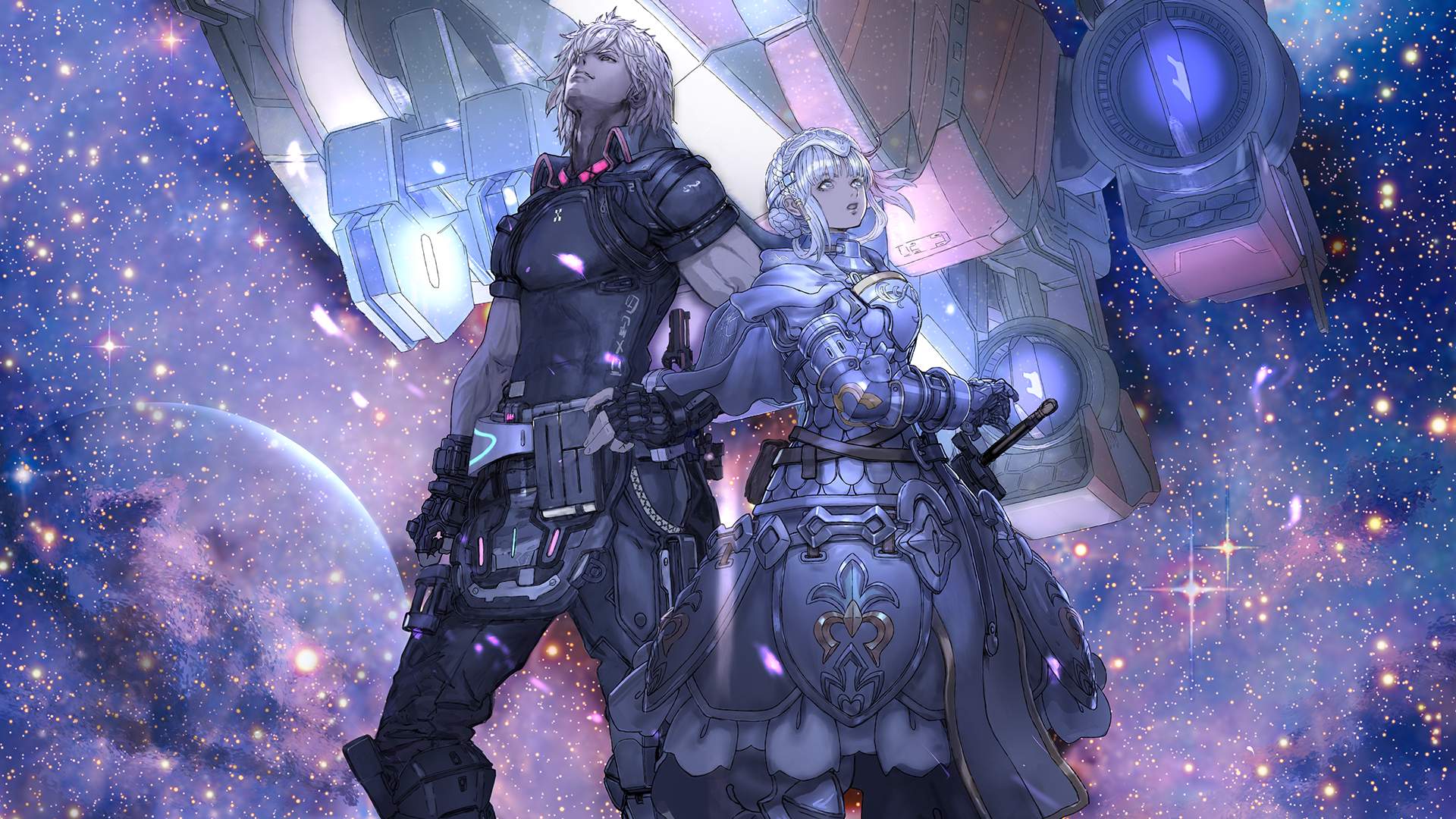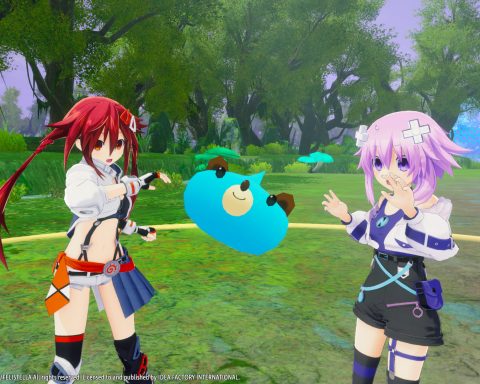The people at Bandai Namco have a good problem with their Taiko no Tatsujin series of rhythm games. They’ve created something that is mechanically perfect. Their cute drum mascot is immediately recognisable and endlessly versatile, and whilst other rhythm games require abstraction and concentration, Taiko is easily understandable and a ton of fun for beginners and veterans alike. It would be simple enough for Bandai Namco to just crank out a song pack every couple of years or so, and I would happily buy each one. But in addition to the base rhythm mode, most modern Taiko releases on consoles also ship with something a little extra – to mixed results.
You probably know what Taiko is already. It’s a rhythm game that gained popularity in the arcades thanks to its huge drum controller – hit in the centre for a bassy, red “Don” note, and hit the edges for a sharp, blue “Ka” note. Big notes require a double-hit and yellow lines are drum rolls, and that’s it. It’s super easy to pick up, but surprisingly complex on its hardest difficulties. Taiko is a kid-friendly rhythm game, with a default four difficulties for every song, and an easy mode that is very accommodating. And it’s immensely popular and prolific. Rhythm Festival, here, is the fourth Taiko release to hit the Switch.
2018’s Drum ‘n’ Fun, in addition to 70 tracks in the standard Taiko mode, came with dozens of drum-themed minigames each with their own timings and mechanics. This game has been the gold standard for me as one of the best rhythm games available on the Switch, and the party minigames are a huge contributor to it. You can imagine my disappointment when the next two Taiko games to be released, the Rhythmic Adventure titles (originally released on 3DS), eschewed minigames for lengthy JRPG campaigns where the combat was replaced by Taiko tracks – a melding of two extremely disparate genres that never quite worked together. But they also had vanilla Taiko as an option, so they were still pretty good.
Rhythm Festival, despite its name, also doesn’t have the fun or the fanfare of Drum ‘n’ Fun. The game’s supplementary mode comprises of two substantial minigames. One is Toybox War, which is a mix between Taiko and a very simple autobattler, and Don-chan Band, which sees up to four players collaborating whilst playing Taiko. Neither of these games feel transformative in the way that Drum ‘n’ Fun’s minigames were, but rather, each of them is just superfluous bells and whistles.
In Toybox War, players duel AI opponents by assembling a team of toys that they summon through the successful playing of a Taiko song. As each toy is summoned, it affects the battlefield whilst also adding to a score counter. Effects range from messing up your opponent’s view of the beatmap to strengthening your own team’s toys. At the end of the song, the player with the most toys on the field wins.
Toybox War is a decent interpretation of the “battle” mode that most rhythm games have, where there are powerups and power-downs that spice up the regular play. The toys themselves though are collectible and varied, but their effects on the game are minimal and no power-down is so disruptive that it makes playing Taiko impossible. It’s also strange that so many toys are centered around distracting or confusing an opponent when for most of Toybox War the opponent is a CPU who isn’t going to be actually affected by something like false notes or faster scrolling. Toybox War has a lengthy mission mode that will take some time to complete, but I found the additions to the Taiko formula more distracting than compelling.
Don-chan Band is even more simple – four players (always four; any shortages are filled by CPUs) play a song together, with slightly different beatmaps so everyone contributes to the overall song. This seems inspired by games like Rock Band, where a team of players collaborates to achieve the best possible score – but in Rhythm Festival it’s messier. The problem is that, because this is a Taiko game, every player is effectively playing the same instrument. But it would get very confusing if each player’s instrument made the same sound, so each player then gets assigned a random sound effect (ranging from regular instruments like trumpets and violins, to movie sfx, to animal noises). The result is a cacophonic nightmare that might be funny a few times but doesn’t have any lasting appeal. It’s just as well that only a small selection of the game’s tracklist is playable in this way.
The minigames have their heart in the right place, but overall feel like afterthoughts. The biggest draw of Rhythm Festival, and the feature which sets it apart from the other Switch Taiko games, is its subscription, which gives players access to an ever-increasing library of songs (currently around 600), mostly Jpop and Jrock heavy hitters that will be familiar to any cursory fan of Japanese culture. This is, on paper, fantastic – it’s a ludicrous amount of Taiko after all – but I worry it spells a kind of crossroads for the series going forwards. The subscription service is not expensive, but it’s also an additional cost on top of a retail-priced game. There is the option to buy song packs to keep, but these don’t cover everything available in the subscription lineup. So if your intention is to play Taiko every day, savour every song, and master anything Bandai Namco wants to throw at you, then the subscription service will be a welcome addition. But for those who, like me, have merely one or two songs that they’d like to bang a drum to, the entry price is a bit steep.
And what does this mean for future Taiko games? Rhythm Festival already has a fair share of songs either included or in the subscription list which are recycled from earlier titles. And whilst the base game has a generous 80 songs, they span such a variety of genres that fans of, say, Vocaloid, or Anisong, will only have a dozen to choose from.
Rhythm Festival’s other big addition is one of the most robust competitive online modes that the series has seen. There’s a fully-fledged ranked online ladder, where players get to pick a song to specialise in and duel other players with their own specialty songs (and mercifully, you can challenge someone who picks a subscription song without paying). I found the latency patchy though – it wouldn’t affect the player’s own gameplay at all, but the depiction of the opponent’s side would occasionally lag so it was difficult to gauge how well they were doing relative to you. A tremendous amount of unlockable cosmetics allows players to express themselves briefly to opponents.
These cosmetics can be purchased in the in-game shop with Rhythm Coins earned from playing songs. These go with Rhythm Points which function as a kind of experience bar, though it functionally does nothing except for unlocking more cosmetics. I found this to be overbearing. After every song, there would be bright screens announcing how many things I’ve earned and unlocked, and after every few songs, I’d be informed that I needed to spend my Rhythm Points or I’d cap out. There is a story sequence that gradually unfolds as the player spends their Rhythm Points, but I never fully understood it – I’m sure it’s full of jokes or puns that would work better in Japanese. It’s quaint and energetic, sure, but also confusing.
I’ve done a lot of complaining so far but I admit the overall package is a lot of fun. The Taiko rhythm game itself is still great, but it’s also something that hasn’t changed across all the Switch releases. The mechanics and graphics remain so similar that from screenshots alone, it would be tough to tell apart Rhythm Festival from Drum ‘n’ Fun or either of the Rhythmic Adventures. Motion controls are still an option although they lack precision, button mode is intuitive but loses the novelty of Taiko. Touch controls in handheld mode are a nice compromise between the two, but by far the best way to play Taiko is with the drum peripheral controller, though this is a separate purchase that I imagine only people who adore Taiko would spring for.
I would say Taiko no Tatsujin: Rhythm Festival is a release for the more hardcore side of the Taiko fanbase, but that would be overlooking the sheer joy and accessibility of the main game. Perhaps I’m merely bitter at the lack of supplementary features, shallow party modes, and a somewhat cynical subscription service that makes Rhythm Festival lag behind Drum ‘n’ Fun. But ultimately, this is more Taiko, and more Taiko is good. It’s not my favourite of Bandai Namco’s outings on the Nintendo console, but it’s not without its charm either.
